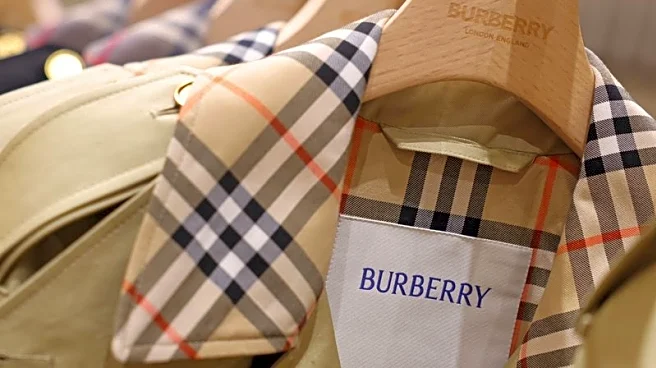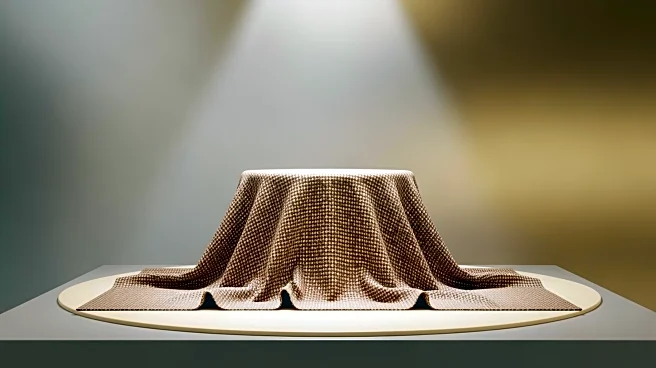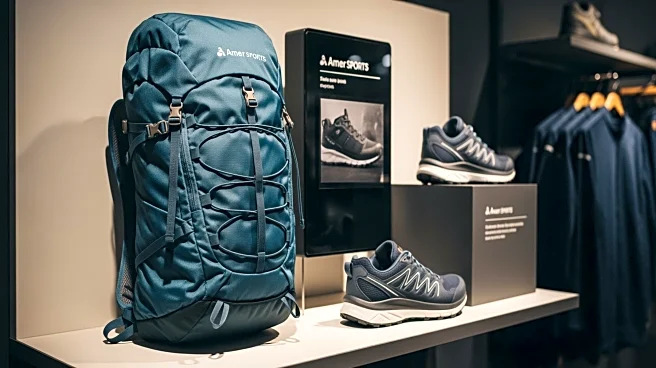What's Happening?
Burberry has reported a return to growth in the second quarter, marking its first quarter of growth in two years. The British luxury brand saw a 2 percent rise in comparable store sales, driven by CEO Joshua Schulman's strategic focus on outerwear and scarves,
and a renewed emphasis on an accessible British aesthetic. This growth comes after seven consecutive quarters of decline, with analysts initially forecasting a 1 percent rise. The brand's shares increased by nearly 6 percent following the announcement. Schulman has strengthened the connection between creative director Daniel Lee's design decisions and commercial teams, aiming to restore Burberry's core identity. The company also reported a 3 percent increase in comparable sales in China, indicating a positive response to new marketing campaigns targeting Chinese luxury buyers.
Why It's Important?
Burberry's return to growth is significant for the luxury sector, which has been facing challenges due to changing consumer preferences and economic uncertainties. The strategic turnaround led by Schulman, including cost cuts and marketing overhauls, has been well-received by investors, with Burberry's shares rising over 30 percent since the start of the year. The recovery in China is particularly crucial, as Chinese consumers are a major driver of global luxury sales. The brand's ability to attract new customers and retain existing ones suggests a successful repositioning in the competitive luxury market. This development may influence other luxury brands to reassess their strategies in response to evolving market dynamics.
What's Next?
Burberry is preparing for the holiday shopping season, which will be a critical test of Schulman's strategy. The brand is introducing 'scarf bars' in stores to highlight cashmere scarves, priced between $450 to $1,150, as part of its autumn and winter collections. The success of these initiatives will be pivotal in maintaining the momentum of growth. Additionally, Burberry's ability to sustain its recovery in China will be closely monitored, as it continues to implement marketing campaigns aimed at stimulating demand among Chinese luxury buyers.
Beyond the Headlines
Burberry's strategic shift towards its core identity and away from high fashion and leather goods reflects a broader trend in the luxury industry, where brands are increasingly focusing on authenticity and heritage to differentiate themselves. This approach may lead to long-term brand loyalty and a more sustainable business model. The emphasis on reconnecting with traditional brand values could also influence cultural perceptions of luxury, promoting a more inclusive and relatable image.














